|
|
|
For over a century, Eaton's department
store's
only real rival was Simpson's. Through the pages of the first
Simpson's
catalogue in 1893, to the last Simpsons-Sears catalogue in 1978, to Sears
Canada's
50th-anniversary edition, the company offered its wares to Canadians all
across
the country.
The Death of Robert Simpson and the
Expansion
of His Enterprise | Sears, Roebuck, through
Simpson's,
Enters the Canadian Mail-order Business | The End of
Simpson's
| Further Reading
|
Canada's Modern Departmental Store talks to you again through the
present
Spring issue of the Canadian Shopper's Hand-Book. We are now
comfortably
located in our beautiful new store, possession of which was taken a few
months
since. No one can, under all conditions, dispute our supreme position as
great
Retailers. The familiar corner of Queen and Yonge Streets is beyond
question
the Leading Retail Headquarters of the Dominion.
So Robert Simpson engaged his catalogue readers in 1896, months after
the
opening of his great new store in downtown Toronto. The six-storey,
steel-girded
structure rose from the ashes of another six-storey building built in 1894
that
had been completely destroyed by fire on March 3, 1895.
By the 1870s, the Industrial Revolution had reached Canada. Families
moved
from farms to big cities and took factory jobs. Downtown areas grew, and
so did
the stores in which the workers shopped. Simpson's - and
Eaton's
- of Toronto were part of this new trend. And, their catalogues
helped
bring big-city goods to rural and small-town residents.
| |
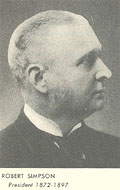 |
|
| |
 Robert
Simpson, 1872-1897. Robert
Simpson, 1872-1897.
|
|
| |
|
|
|
Robert Simpson was a Scottish immigrant who set up his first retail
venture
in Newmarket, Ontario. In 1871, he moved to Toronto and founded
Simpson's
department store. By 1872, Simpson was hand delivering
"dodgers"
- handbills, or flyers - to houses in the city.
Simpson's published
its first catalogue in 1893. Its 82 pages were filled with fabrics and
notions;
women's drawers, hosiery, mantles, and jackets; men's ties and
suspenders;
valises; and, perfumes and other fancy goods.
| |
 |
|
| |
 For
decades, Simpson's and Eaton's shoppers criss-crossed Queen Street to
compare prices and quality, 1924. For
decades, Simpson's and Eaton's shoppers criss-crossed Queen Street to
compare prices and quality, 1924.
|
|
| |
|
|
|
Simpson's major competitor was Timothy Eaton. Eaton promised
"goods
satisfactory or money refunded." Robert Simpson declared that
"You'll
enjoy shopping at Simpson's." The two retail giants stared
down each
other across Queen Street at Yonge. Their prices and selection stayed
competitive,
thanks to employees who criss-crossed the street and pored over the
stores'
wares.
|
The Death of Robert Simpson and the
Expansion
of His Enterprise
| |
 |
|
| |
 By
the 1940s, Simpson's mail-order department had opened distribution centres
across the country. By
the 1940s, Simpson's mail-order department had opened distribution centres
across the country.
|
|
| |
|
|
|
In 1897, Robert Simpson died and his store was taken over by three
investors:
H. H. Fudger, J. W. Flavelle, and A. E. Ames. Over the next half-century,
they
began to expand Simpson's reach. Stores opened in Montreal, Halifax,
Regina,
and London. The mail-order business moved to an eleven-storey building in
Toronto
in 1914.
| |
| |
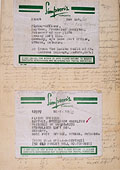 |
|
| |
 Simpson's
shipping receipts, 1943. These receipts were probably for parcels sent
from Canadians to Canadian prisoners of war in Germany. Simpson's
shipping receipts, 1943. These receipts were probably for parcels sent
from Canadians to Canadian prisoners of war in Germany.
|
|
| |
|
|
|
By the 1930s, the catalogue's printing plant took up an entire
floor
of the building and soon became one of Canada's largest publishing
enterprises.
In 1916, an eight-storey mail-order warehouse was built in Regina. A
five-storey
building opened in Halifax in 1919.
By 1943, 1000 people worked in the Simpson's mail-order division.
The
Toronto store employed 5500 workers - undoubtedly one of the
city's
largest employers. Simpson's now had 149 order offices across the
country,
298 delivery trucks, and 66 horses. (During the Second World War, many
goods
were delivered by horse and carriage because gas and rubber were
rationed.) Its
switchboard handled two million telephone orders a year, in a nation of 12
million
people.
|
Sears, Roebuck, through Simpson's,
Enters
the Canadian Mail-order Business
Mail-order revenues reached $100 million in 1951. The company's
success
attracted the attention of an American retail giant: Sears, Roebuck. Sears
began
to open new stores in Canada under the Simpson's-Sears name, and
took over
the mail-order division. (The five original Simpson's stores were
not sold,
however. They remained open under the Simpson's name.) Finally, with
the
backing of Sears, Simpson's could challenge Eaton's retail
dominance.
| |
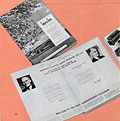 |
|
The opening pages of the
first
Simpsons-Sears catalogue published in 1951 carried a reassuring message
to Simpson's shoppers worried about the sale of Simpson's to the American
retail giant. From Simpsons-Sears: The First Twenty-Five Years,
1979.
|
 |
|
Canadians received the first Simpsons-Sears catalogue in February 1953.
The
spring-and-summer edition had 556 pages. It featured Allstate car
insurance,
live baby chicks, saddles, and even radiation detectors (Geiger counters).
| |
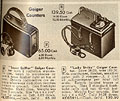 |
|
Geiger counters for
measuring
home radioactivity levels were available to Canadians at the beginning
of the Cold War. Simpsons-Sears Spring/Summer Catalogue, 1954,
p. 547.
|
 |
|
By 1954, nine new Simpson's-Sears store had opened. A large, new
catalogue-order
centre was built in Burnaby, BC, and the Halifax and Regina catalogue
centres
were enlarged. In the 1960s, Simpson's-Sears stores moved to
suburban malls,
following Canadians as they bought homes on the outskirts of cities. The
Toronto
Yorkdale store opened in 1964, sharing mall space with Eaton's.
Montreal's
Fairview store opened the next year.
| |
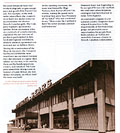 |
|
Simpsons-Sears store,
Québec,
1963. The company expanded rapidly during the 1950s and 1960s. From
Simpson's-Sears:
The First Twenty-Five Years, 1979.
|
 |
|
The 1971 fall-and-winter catalogue was 736 pages long: 50 000 items
could
be ordered from it, from children's wear to televisions. Two million
copies
were distributed in French and English. Simpson's-Sears had 41
stores,
four catalogue centres, and 553 catalogue-order offices.
| |
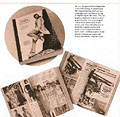 |
|
By the early 1970s, the
company
was a real rival to Eaton's. Simpsons-Sears Catalogue, 1971, cover as
published in Simpson's Sears: The First Twenty-five Years,
1979.
|
 |
|
|
The End of Simpson's
| |
 |
|
The Bay department store,
Queen and Yonge Streets, Toronto. The Hudson's Bay Company renovated
and expanded Robert Simpson's 1896 building.
|
 |
|
| |
 |
|
| |
 The
Sears catalogue is still very popular with Canadians. Sears Canada
Catalogue,
2003, p. 710. The
Sears catalogue is still very popular with Canadians. Sears Canada
Catalogue,
2003, p. 710.
|
|
| |
|
|
|
Eaton's published its last catalogue in 1976. In 1978, Sears
Canada
took over the mail-order division from Simpsons-Sears and began publishing
the
catalogue under the Sears name. In 1978, the Hudson's Bay Company
bought
the remaining Simpson's stores and one-third of the Simpsons-Sears
stores.
By the late 1980s, the Simpson's stores were either sold to Sears or
converted
into Bay stores, including Robert Simpson's original store at Queen
and
Yonge Streets in Toronto.
Today, Sears is the only traditional department store catalogue
published
in Canada. Sears bought Eaton's in 1999. In the year of its 50th
anniversary,
it published 24 different catalogues and handled 22 million orders. Since
the
1950s, it has been Canada's most successful department store
catalogue.
|
|
Further Reading
Burton, G. Allan. A Store of Memories. Toronto: McClelland
and Stewart,
1986.
Denison, Merrill. This Is Simpson's: A Story of Canadian
Achievement
Told in Celebration of the 75th Anniversary of One of Her Great
Institutions.
Toronto: Simpson's Limited, 1947.
Ferry, John William. A History of the Department Store. New
York:
The MacMillan Company, 1960.
Simpsons-Sears Limited. Simpsons-Sears: The First Twenty-Five
Years.
Toronto: Simpsons-Sears Limited, 1979. The author wishes to thank the
University
of Toronto Libraries for graciously providing the illustrations from this
book
for this essay.
Toronto Star Limited. The Simpsons Century. Toronto: The
Toronto
Star Limited, 1972.
|
| |
|
|